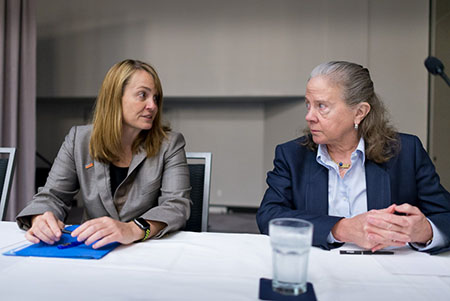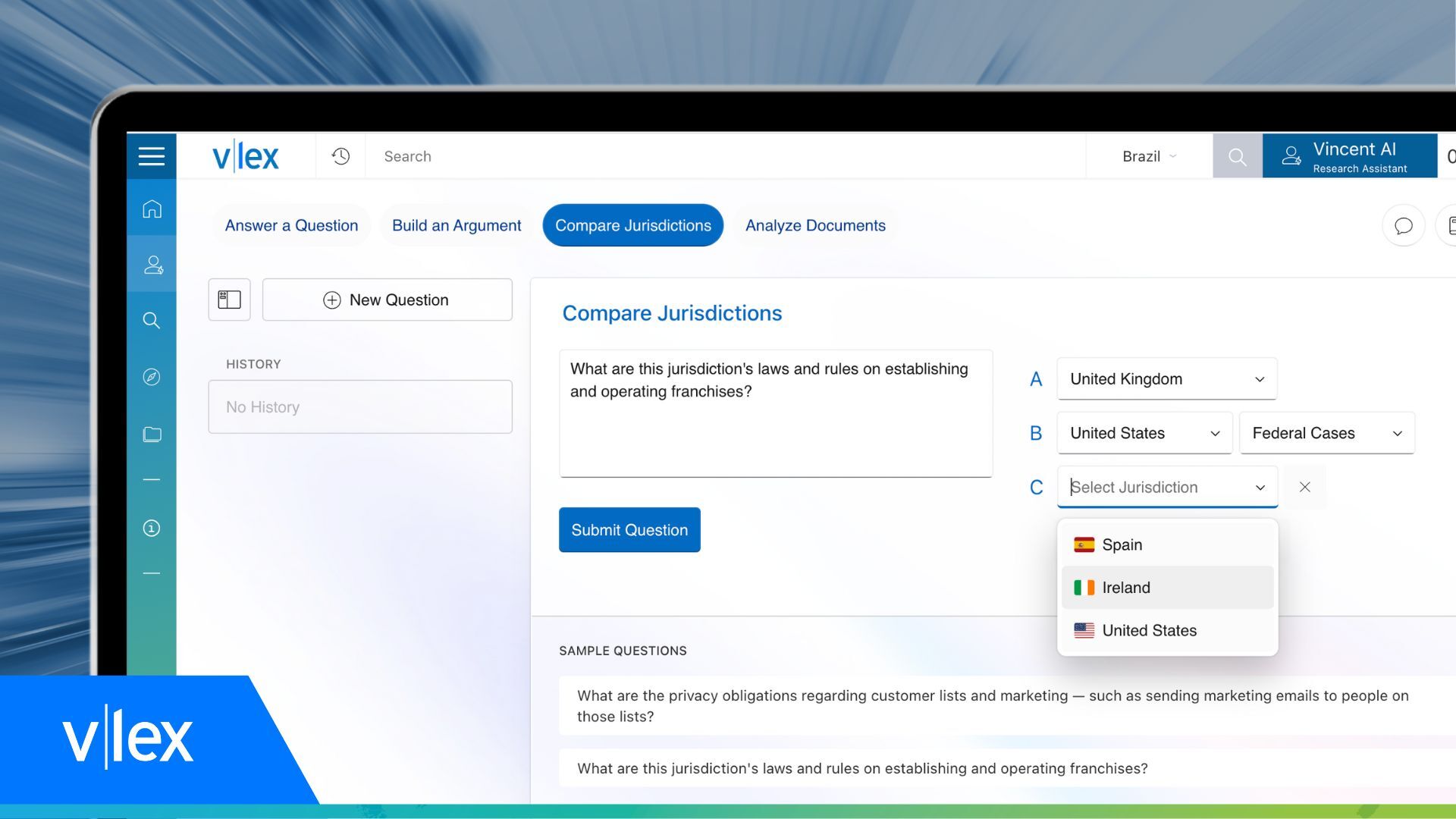How can law schools encourage diversity and opportunity? Two Florida deans speak out

Dean Laura Rosenbury of the University of Florida Levin College of Law; and Dean Patricia White of the University of Miami School of Law. Photo by Tom Salyer.
Law schools are adapting to changing times with courses and training that go beyond the goal of teaching students to practice law. They are also ensuring that students gain an understanding of diversity and inclusiveness as well as be able to demonstrate technological competence, according to two Florida law school deans who have been at the cutting edge of these developments.
Law schools are changing in remarkable ways, and some of them might not be aware of how or how much this is happening, said Joann Grages Burnett, associate director of career development at the Stetson University College of Law in Gulfport, Florida. Burnett made her remarks on Friday at a panel discussion titled “Changing Tides: How Law Schools are Riding the Wave of an Evolving Legal Market,” as part of the ABA Midyear Meeting in Miami.
Burnett was moderating the discussion with two other deans from Florida law schools: Laura Rosenbury, at the University of Florida’s Levin College of Law in Gainesville; and Patricia D. White, at the University of Miami School of Law. Dean Angela Felecia Epps, dean at the Florida A&M University College of Law, had to cancel her appearance.
The speakers addressed two key topics: diversity and inclusion, and adapting to the legal landscape of today and tomorrow. They focused particularly on technology, education and training for students who want to prepare for so-called JD advantage jobs for which graduates won’t need to be licensed by the bar but can apply their skills and training in other fields.
Dean White is the fourth woman dean at Miami Law. No other law school has had even three female deans, White said, so her school was early in the game. The school also has had an African-American man as dean. That’s one of the obvious ways to improve diversity, she said—other things are harder to do, and less obvious.

Joann Grages Burnett, associate director of career development at the Stetson University College of Law, moderated the discussion. Photo by Tom Salyer.
“You can’t force people to be accepting of differences,” she explained. “You can hope, you can aspire and you can make it clear those are institutional values, those are moral values, those are things you think of as professional values, but you can’t force them to do it.”
White said that she received an email earlier that day from a member of her staff about a student making “awful, xenophobic comments” in his private Facebook account. “There’s nothing much we can do about that,” White said, noting that the student can’t be censored. But the incident might be used as a teaching moment for other students, telling them that this is not considered professional behavior.
While White has been a law dean for going on 18 years, Dean Rosenbury has been one for 18 months. She arrived with a mandate to immediately enroll the most qualified 1L class, and a diverse one. In August, she says, the school enrolled its most diverse class in its 107-year history: 36 percent racial and ethnic minorities (the previous high was 30 percent). The school more than doubled its enrollment of Hispanics, which is reflective of Florida’s diversity, and female students make up 47 percent of enrollment.
University of Florida’s Levin College of Law also recently instituted a structural change to encourage inclusiveness by creating a student bar association that has no dues requirement, making it easier for students to join and become active members. The student bar association’s first elections will be held at the end of the month.
“It has to be bottom-up, it has to come from the student body themselves,” Rosenbury said of creating a community of inclusiveness.
As for the pedagogical and practical training for professional careers, law schools are moving beyond just preparing students to graduate and move on to being litigators or transactional lawyers.
The JD-advantage category of law school graduates is growing fast, White says, now that students know the degree is a ticket to more than just practicing law. There is a huge percentage of JDs in politics and business.
“My billionaire alums, and I have several, are all people who didn’t practice law, so I pay a lot of attention that that,” White said, getting a laugh from the audience. Miami Law is in close quarters with other schools at the university, and it offers more than a dozen joint degrees in which law students are in a mix with graduate students from a number of different disciplines on the campus.
Rosenbury says she has been pushing for her law school to move beyond the umbrella term “e-discovery,” so that students learning to use data with technology won’t be getting a message that says data is only for litigation.
Follow along with our full coverage of the 2017 ABA Midyear Meeting



